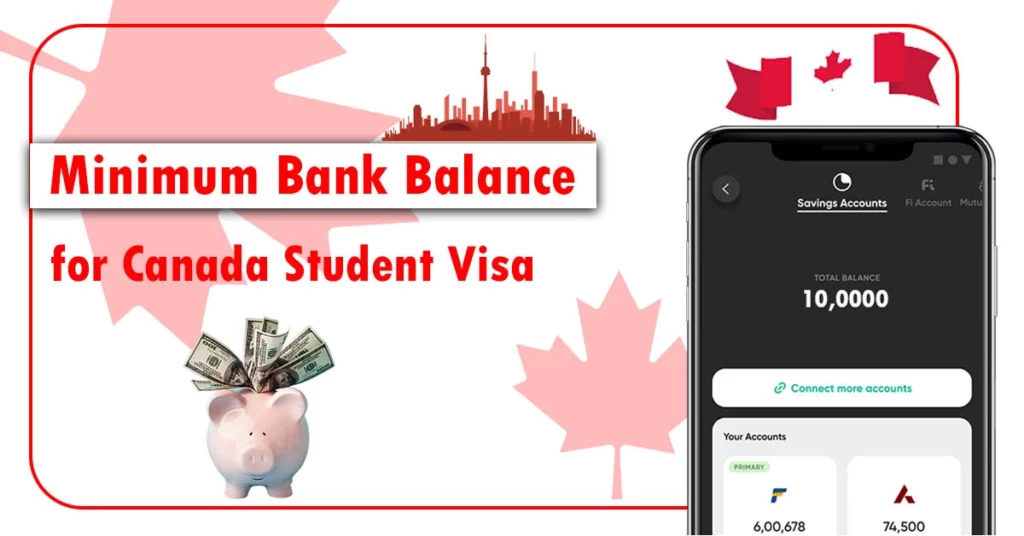Are you considering studying in Canada and wondering about the financial requirements for obtaining a student visa? One crucial aspect to understand is the minimum bank balance requirement. In this comprehensive guide, we'll delve into everything you need to know about the minimum bank balance for a Canada student visa, including why it's important, how to calculate it, and tips for meeting this requirement.
Why is the Minimum Bank Balance Important?
The Canadian government requires international students to demonstrate that they have enough funds to cover their tuition fees, living expenses, and other costs while studying in Canada. The minimum bank balance serves as proof of your financial capacity to support yourself throughout your studies without relying on employment or public assistance.
The Current Minimum Bank Balance:
As of January 1, 2024, the minimum bank balance requirement for a single student applying for a Canadian student visa is CAD $20,635 per year (approx. USD $17,000). This amount excludes your first year's tuition fees.
How to Calculate the Minimum Bank Balance
The specific amount of the minimum bank balance varies depending on factors such as your program duration, location of study, and individual circumstances. Generally, you'll need to show proof of funds to cover:
- Tuition Fees: The total cost of your tuition for the first year of study.
- Living Expenses: An estimated amount for living expenses, which is determined by Immigration, Refugees, and Citizenship Canada (IRCC). This includes accommodation, food, transportation, and other personal expenses.
- Additional Costs: Funds for other expenses such as health insurance, textbooks, and miscellaneous fees.
Meeting the Minimum Bank Balance Requirement
Here are some tips to help you meet the minimum bank balance requirement for your Canada student visa:
- Plan Ahead: Start saving early and budget wisely to ensure you have sufficient funds to cover all expenses.
- Documentation: Gather all necessary documents, including bank statements, sponsorship letters (if applicable), and any other financial documents required by the Canadian visa office.
- Currency Conversion: Ensure that your bank balance is equivalent to the required amount in Canadian dollars (CAD) at the time of visa application.
- Source of Funds: Provide evidence of the source of your funds, whether it's from personal savings, scholarships, sponsorships, or other legitimate sources.
- Maintain Funds: Maintain the required bank balance in your account until your visa application is processed to avoid any issues.
Final Thoughts
Understanding the minimum bank balance for a Canada study visa is essential for a smooth visa application process. By carefully planning your finances, gathering the necessary documentation, and ensuring compliance with visa requirements, you can enhance your chances of obtaining a student visa and pursuing your academic aspirations in Canada.
If you have any further questions or need assistance with your visa application, consult with a reputable immigration consultant or the official website of Immigration, Refugees, and Citizenship Canada (IRCC) for up-to-date information and guidance.
Embark on your journey to studying in Canada with confidence, knowing that you're well-prepared to meet the financial requirements and make the most of your educational experience abroad.
FAQ’s
What's the current minimum bank balance for a Canada student visa?
As of January 1, 2024, it's CAD $20,635 per year (approx. USD $17,000), excluding your first year's tuition fees. This amount demonstrates you can cover living expenses.
What kind of proof of funds do I need?
You'll need documented proof of sufficient funds in a bank account for at least the past four months. Bank statements, investment certificates, or documented financial support from a sponsor are all acceptable forms.
Do living expenses factor into the minimum balance?
Yes! The minimum is a base figure. Factor in additional costs like housing, food, transportation, and healthcare for your chosen city. Research average living expenses to get a realistic picture.





Comments